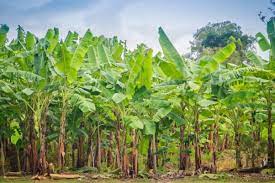Are You Aware That Some Trees Don’t Have Wood?
With its enormous variety of plants and creatures, each with its own distinct traits, nature never ceases to astound us. Although there are many different types of trees that we are familiar to, have you ever heard of any? I just came across this curious question on the internet community Quora: “Is there any tree that does not contain wood?” Many people are interested in this query.
There is a fundamental difference between plants and trees, according to one user. Plants are smaller in size and grow near to the ground, but trees are larger and can stand on their own, even without stalks. The majority of trees include wood, which is often used to make furniture. Although sometimes categorized as trees, bananas don’t have wood. Instead, they are made up of several tissue layers. They have a noticeably soft feel, and a quick scratch of the nail will allow you to remove their delicate bark. Because of this, they are regarded as plants in the botanical sense, much as henna, mint, basil, and other herbs. Papaya trees are similar in that they don’t have any wood. Furthermore, trees that produce coconuts and betel nuts are not classified as having wood.
Though there are many unusual plants, have you ever come across a tree that exudes anything like blood when cut? According to reports, bloodwood trees display this characteristic when any part of its trunk or branches are slashed, producing a substance that resembles blood. The majority of these trees may be found in South Africa.
The bloodwood tree, also known as Pterocarpus Angolensis, is a deciduous tree with a flattened crown and a high canopy that may grow up to 15 meters in height. This tree’s wood is used for a variety of things, including the construction of furniture, the creation of tools, and the creation of oddities. It is widely sought-after for furniture manufacture because to its ability to polish well and resistance to termites and borers. In addition to its wood, the bloodwood tree has therapeutic benefits.







